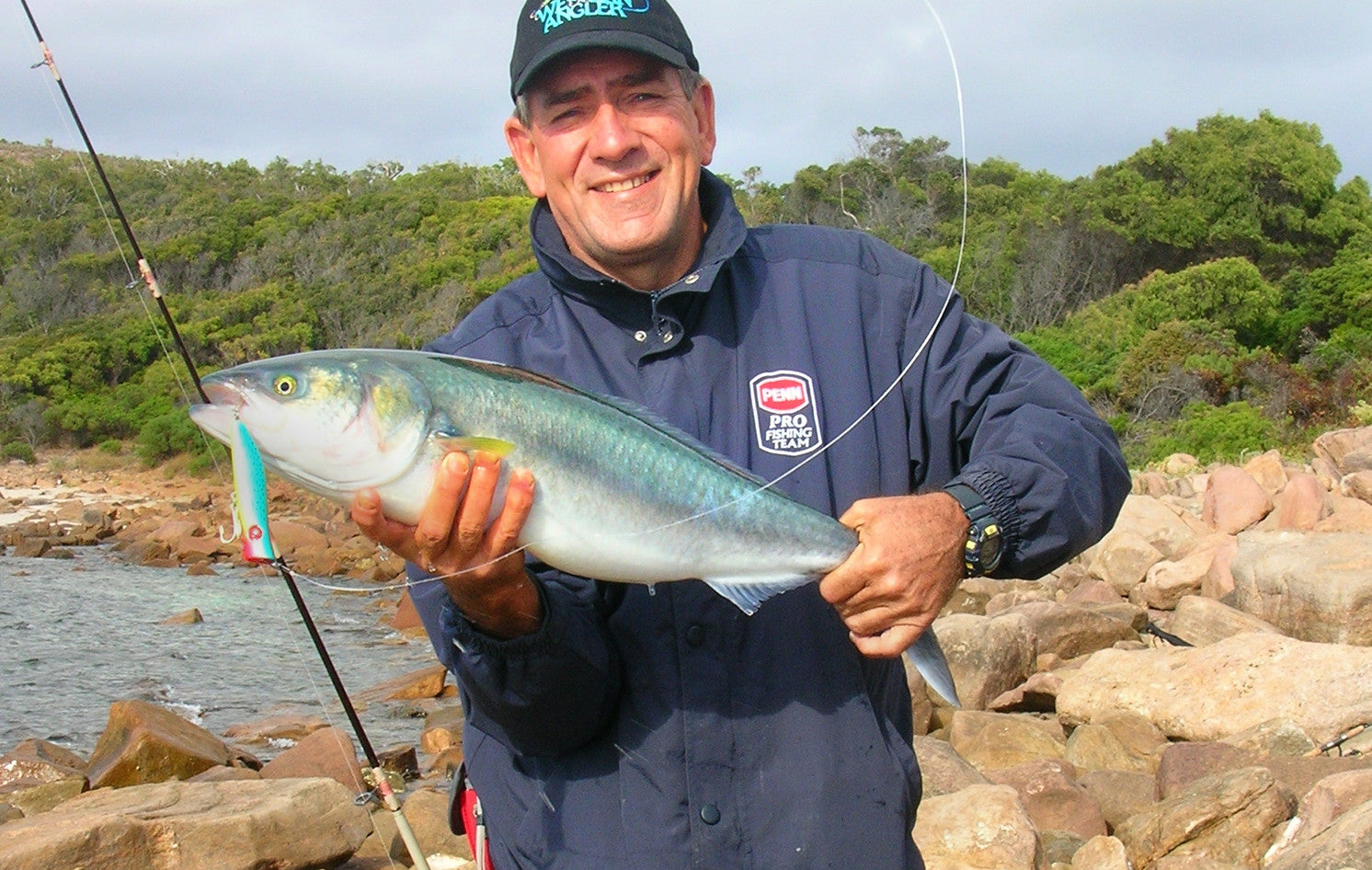SPECIES GUIDE
Australian Salmon Fishing Guide
If Australian Salmon were even passably pleasant on the taste buds, they would rate as close to the perfect all round fish. They are robust and powerful, congregate in big schools, often very close to shore, take lures readily and are given to spectacular above-the-surface antics when hooked.
There are two separate salmon migrations in Australia, one that runs from the Great Australian Bight across the bottom and up the west coast as far as Perth, and one that heads the other way and up the east coast, sometimes as far as the New South Wales/Queensland border.

The fish that head west on their spawning migration are generally quite a bit bigger than their east coast cousins, occasionally reaching weights of 8kg and often averaging 4-5kg. Heavy commercial fishing limits what could be a superb recreational fishery, especially around March to May on the lower west coast. Salmon schools can vary from a handful of fish to 100 tonnes or more. These fish can be frustrating when not in a feeding frame of mind, but they provide brilliant sport when in the mood.
Heavy metal lures in the 50-70g range are usually the weapons of choice for those chasing Australian salmon. Being able to cast a long distance is often an advantage as the schools don’t always pass by right in close to the beach. A medium paced retrieve will work, but holding the rod high and winding fast will skip the lure across the surface and this can be deadly, especially when the salmon are really hungry.On southern beaches, especially in the Esperance area, salmon are about to some extent for most of the year. Anglers may drive along the crisp white sand watching for the telltale dark smudge of a salmon school, jumping into the action with spinning rods as soon as one is spotted.

The sight of a big salmon angrily exploding through the surface in the shore break is one of fishing’s great moments, but there is equally good fishing available from boats. The trick is to find the reefs where the schools like to hold up for a while.
Casting from an anchored boat in towards the reef accounts for most boat-caught salmon and if you can safely anchor close enough, medium and large minnow style lures work exceptionally well. Halco Laser Pro 160s and 190s or RMG Scorpion 125s or 150s are all consistently good salmon takers.

If conditions don’t permit getting close enough to cast minnows, then heavy metal lures will do the trick, but watch they don’t sink too far and become snagged on the reef. Trolling is another option, either around inshore reefs or just out from rocky headlands. Generally, slow to medium trolling speed is all that’s needed and the same minnows as suggested for casting in to reefs are ideal choices. As great as they are to catch, salmon make poor table fare and many are released, hopefully to fight another day, although the level of commercial fishing for them makes that unlikely.